-
More equitable access to DNA identification after disaster or conflict needed: experts
The April 2013 collapse of the Rana Plaza Factory Building in Bangladesh, in which more than 1,130 people were killed, is only the latest in a long line of events that has made plain the plight of the families whose loved ones go missing after conflict and disaster. Experts argue that international structures are needed to promote more equal access to forensic identification technologies, ensure their fair and efficient use, and provide uniform protections to participants following large-scale conflict and disaster.
-
-
Calculating the cost of a ton of mountaintop removal coal
To meet current U.S. coal demand through surface mining, an area of the Central Appalachians the size of Washington, D.C., would need to be mined every eighty-one days. This is about sixty-eight square miles — or roughly an area equal to ten city blocks mined every hour. A 1-year supply of coal would require converting about 310 square miles of the region’s mountains into surface mines.
-
-
Studying tsunami resilience in California
While scientists cannot predict when a great earthquake producing a pan-Pacific tsunami will occur, thanks to new tools being developed by federal and state officials, scientists can now offer more accurate insight into the likely impacts when tsunamis occur. This knowledge can lead officials and the public to reduce the risk of the future tsunamis that will impact California.
-
-
New model corrects tornado records
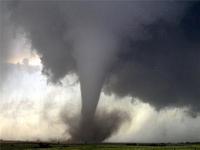
In the wake of deadly tornadoes in Oklahoma this past spring, researchers have developed a new statistical model that will help determine whether the risk of tornadoes is increasing and whether they are getting stronger. Climatologists have been hampered in determining actual risks by what they call a population bias: That is, the fact that tornadoes have traditionally been underreported in rural areas compared to cities, but now researchers have outlined a method that takes the population bias into account, as well as what appears to be a recent surge in the number of reported tornadoes, thanks in part to an increasing number of storm chasers and recreational risk-takers roaming Tornado Alley.
-
-
Cold-formed steel rebuilds earthquake-resistant architecture
When engineers attempt to make a building earthquake-resistant, they use specific structural components, appropriately called details, to absorb earthquake forces and help direct some of those forces back to the ground. That works, but when an earthquake hits, the entire building reacts, not just the sections containing details. Even though academic research has led to improvements to the original building codes over the decades, there is much to be learned about the entire system of a cold-formed steel building as it responds to an earthquake.
-
-
New technique developed to assess the cost of major flood damage
A new approach to calculating the cost of damage caused by flooding was presented at the International Conference of Flood Resilience: Experiences in Asia and Europe which was held last week. The methodology combines information on land use with data on the vulnerability of the area to calculate the cost of both past and future flooding events.
-
-
“Climate Change, Water Conflicts, and Human Security” report released
Increasingly, climate change and the associated increase in the frequency of extreme weather events such as floods, droughts, and rising sea level, are acknowledged as not only having humanitarian impacts, but also creating national and regional political and security risks. While people and governments can adapt to these impacts, their capacity to do so varies.
-
-
Global warming increasing risk of record heat: scientists
Drought shriveled crops in the Midwest, massive wildfires raged in the West, and East Coast cities sweltered. The summer of 2012 was a season of epic proportions, especially July, the hottest month in the history of U.S. weather record keeping. As the world warms, it is likely that we will continue to see such calamitous weather. Scientists caution against trying to determine whether global warming caused any individual extreme event, but they say that the observed global warming clearly appears to have affected the likelihood of record heat.
-
-
Knowing exposure risks crucial to saving structures from wildfires
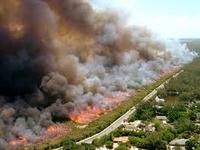
A recent study of one of California’s most devastating wildland fires strongly suggests that measures for reducing structural damage and property loss from wildland urban interface (WUI) fires are most effective when they are based on accurate assessments of exposure risks both for individual structures and the community as a whole.
-
-
Top Five most awesome robots
In the last decade, robots have often been employed on the battlefields of Iraq and Afghanistan, usually to seek out hidden bombs. More and more of these the robots are now being adopted by first response agencies to help in search-and-rescue operations in the wake of disasters. The growing interest in – and usefulness of — robotics have also inspired a series of competitions and challenges, some of which are directed at high-school and college students, to encourage budding scientists to go into the field of robotics.
-
-
Deflecting asteroids to protect Earth
Potential asteroid impact on Earth can have disastrous consequences. In order to prevent such collisions, earthbound space objects must be deflected. This can be accomplished using a space probe to impact the asteroid.
-
-
Wildfires to worsen with climate change
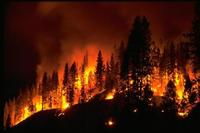
Air quality has vastly improved over much of the United States in the past forty years as a result of government efforts to regulate emissions. Gradual climate change may contribute in the coming years to increases in significant, disruptive events like severe storms, floods, and wildfires. A Harvard model predicts wildfire seasons by 2050 will be three weeks longer, up to twice as smoky, and will burn a wider area in the western United States. These increasing wildfires may erase some of the progress made on air quality.
-
-
Sandy Task Force issues sixty-nine rebuilding recommendations
The Hurricane Sandy Rebuilding Task Force, appointed by President Obama and chaired by Housing and Urban Development secretary Shaun Donovan, last week release its much-anticipated report, in which it lays out sixty-nine policy recommendations for improving areas affected by Hurricane Sandy last October. The report stressed the importance of investment in new and better construction to withstand increasingly dangerous storms and surges caused by climate change.
-
-
Jersey shore towns build protection against future storms
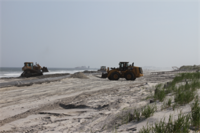
Mantoloking and Brick townships in New Jersey were among the hardest hit by Superstorm Sandy. The storm also destroyed the natural dune barriers which offered a measure of protection. The two cities have decided to take action to minimize the damage of inflicted by a future storm: a $40 million project will see a steel wall —extending sixteen feet above the beach with a depth of thirty-two feet below the ground, and covered in sand to form an artificial dune — will run along the length of the two towns.
-
-
Fukushima radioactive plume to reach U.S. next year
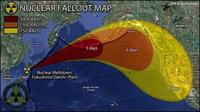
The radioactive ocean plume from the 2011 Fukushima nuclear plant disaster will reach the shores of the United States within three years from the date of the incident, but is likely to be harmless, according to a new study. While atmospheric radiation was detected on the U.S. west coast within days of the incident, the radioactive particles in the ocean plume take considerably longer to travel the same distance.
-
More headlines
The long view
Using Drone Swarms to Fight Forest Fires
Forest fires are becoming increasingly catastrophic across the world, accelerated by climate change. Researchers are using multiple swarms of drones to tackle natural disasters like forest fires.
How Climate Change Will Affect Conflict and U.S. Military Operations
“People talk about climate change as a threat multiplier,” said Karen Sudkamp, an associate director of the Infrastructure, Immigration, and Security Operations Program within the RAND Homeland Security Research Division. “But at what point do we need to start talking about the threat multiplier actually becoming a significant threat all its own?”
